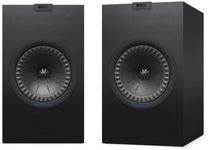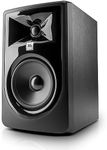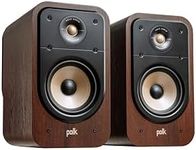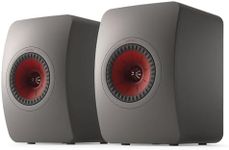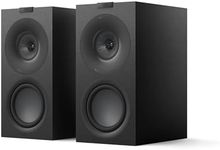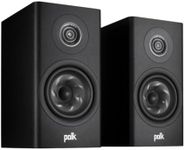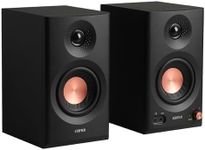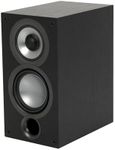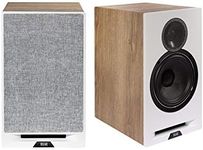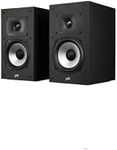Buying Guide for the Best Bookshelf Speakers
Choosing the right bookshelf speakers can make a big difference in your listening experience, whether you’re enjoying music, movies, or games. The key is to match the speaker’s features to your room size, listening habits, and the type of sound you prefer. Understanding the main specifications will help you make a confident choice that fits your needs and space.Speaker SizeSpeaker size refers to the physical dimensions of the speaker cabinet and the drivers inside. Larger speakers often produce deeper bass and can fill bigger rooms with sound, while smaller speakers are easier to place and fit well in compact spaces. If you have a small to medium room or limited shelf space, a compact speaker is usually sufficient. For larger rooms or if you want more powerful sound, consider a bigger model.
Power Handling (Wattage)Power handling, measured in watts, tells you how much power the speakers can handle from an amplifier without distortion or damage. Lower wattage speakers (20-50W) are suitable for casual listening in small rooms, while higher wattage speakers (50-100W or more) are better for louder volumes or larger spaces. Match the speaker’s power rating to your amplifier’s output and your listening habits—if you like to listen at high volumes, choose speakers with higher power handling.
Frequency ResponseFrequency response shows the range of sounds the speaker can reproduce, from low bass to high treble, usually measured in Hertz (Hz). A wider frequency range means the speaker can play deeper bass and higher treble. For most music and movies, a range of about 50Hz to 20kHz is sufficient. If you want more bass, look for speakers with a lower starting frequency, but remember that bookshelf speakers may still need a subwoofer for very deep bass.
SensitivitySensitivity measures how efficiently a speaker converts power into sound, usually given in decibels (dB). Higher sensitivity (above 88dB) means the speaker will play louder with less power, which is helpful if you have a low-powered amplifier. Lower sensitivity speakers need more power to reach the same volume. If you have a modest amplifier or want to save energy, look for higher sensitivity ratings.
Connectivity (Passive vs. Powered)Bookshelf speakers come in passive (require an external amplifier) and powered (have a built-in amplifier) versions. Passive speakers give you more flexibility to upgrade your system, while powered speakers are easier to set up and use, especially if you don’t have an amplifier. Choose powered speakers for simplicity or passive ones if you want to customize your audio setup.
Inputs and FeaturesSome bookshelf speakers offer extra features like Bluetooth, RCA, optical, or USB inputs, making it easier to connect to different devices. If you want to stream music wirelessly or connect directly to a computer or TV, look for speakers with the right inputs. Think about what devices you’ll use most and pick speakers that support those connections.
Build Quality and DesignBuild quality affects both the durability and the sound of the speakers. Well-built cabinets reduce unwanted vibrations and improve sound clarity. Design also matters for how the speakers fit into your room’s style. If you care about aesthetics or plan to move the speakers often, consider both the materials and the look of the speakers.
